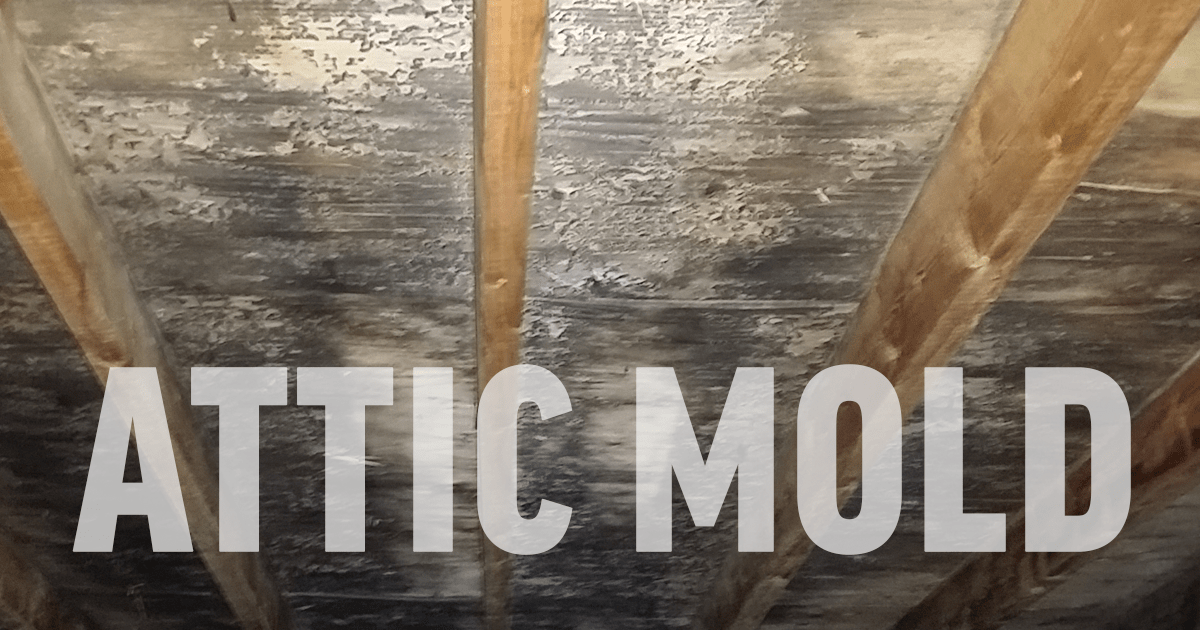Attic Mold Inspections
Attic mold if left unaddressed can lead to problems from health issues to damaged attic structures. An annual attic inspection after a long midwest winter is the perfect time to identify existing attic mold or conditions likely to result in mold growth.
Attic
Homeowners are often surprised to learn they have mold in their attic. Because most homeowners rarely spend time in the attic, often attic mold is only discovered during a professional home inspection when the home is on the market or being sold. Attic mold can be a deal-breaker or at least delay a sale until mitigation is completed.
Where Does Mold Come From?
We are all exposed to mold on a regular basis. Mold spores exist everywhere, indoors and outside. Outdoor mold spores are rarely a problem. Mold problems occur when mold spores concentrate in closed indoor environments, like an attic.
Mold doesn’t just grow on food products. Mold can grow on almost any surface including wood, metal, plastic, fabric, and paper products. Mold can grow anywhere there is ample moisture, a relatively steady temperature, and organic matter like dust, paper, wood, or cotton that can be used as food.
Various Mold Species
There are hundreds of mold species, some are benign while others can be quite dangerous. It is impossible to identify a specific mold species with the human eye. Exact mold identification can only be done under a microscope or via laboratory testing. As such, we strongly recommend you not attempt DIY attic mold removal. Contrary to many claims, bleach is not a permanent solution to mold mitigation.
Attic Mold Can Rapidly Spread
Under the right conditions, mold can rapidly spread. Unaddressed mold can even spread to living spaces below. Mold spores in the attic can also impact indoor air quality. For those suffering from asthma, allergies, or a compromised immune system, mold can aggravate their condition.
Here are the 5 Most Common Causes of Attic Mold
1) Poor or Non-existent Attic Ventilation: Your attic needs ventilation (removing stagnant air and replacing it with fresh outdoor air)
2) Insufficient or Incorrect Attic Insulation: The wrong type of insulation or poorly installed insulation can allow moist air from living spaces to gather in the attic
3) Roof Leaks: Moisture from leaks can accumulate and foster mold growth
4) Dryer & Bathroom Fans Exhausting into the Attic: Warm moist air can generate vapors that condense on attic surfaces.
5) Ice Dams: Snowmelt overflow from frozen gutters can seep into that attic.t
Attic Moisture
All the causes above tie back to the central culprit – attic moisture. Without moisture, mold can not grow. That is why we highly recommend inspecting your attic for moisture at least once and preferably twice each year. Early detection can dramatically reduce the amount of damage mold can do.
Signs of Attic Mold
Attic mold doesn’t look like the mold on your bread. Attic mold will present as dark brown to various shades of gray staining on wood surfaces and can appear as a white, light gray to a greenish-gray powdery substance on various surfaces. Mold is often accompanied by mildew and has a unique odor many would call “musty”.
Free Attic Mold Assessments
Not sure if you have attic mold? If you live in Chicago or the surrounding suburbs, call us for a free attic assessment. Our comprehensive attic mold inspection includes assessing insulation, ventilation, and air gaps. We look for signs of mold, moisture build-up, and any signs of attic infestation at no cost to you!
Call us today at 630.830.3870 to book your assessment


